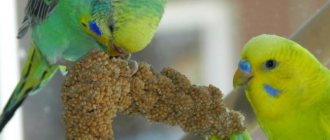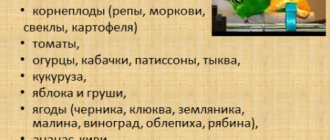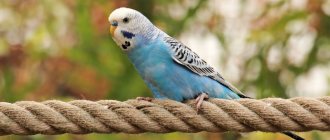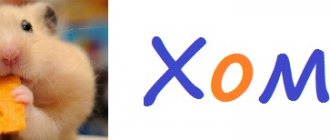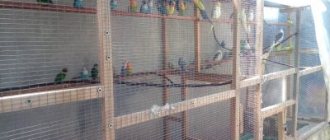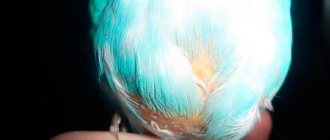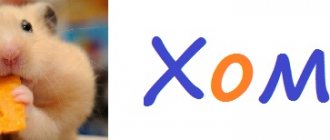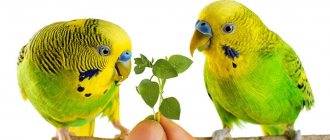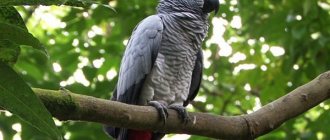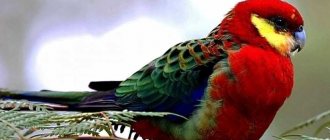Many people choose feathered pets for home keeping. Decorative birds have good intelligence and delight owners with their perkiness, beautiful plumage and ringing voice.
Parrots are often kept in houses and apartments. In order for your feathered friend to live a relatively long time and not get sick, it is necessary to create proper care for the bird and select a healthy menu. The diet of parrots should include not only grain crops, vegetables and fruits, but also special supplements rich in vitamin and mineral complexes. Some of these additives to the food of birds are sepia and mineral stone.
In the article we will look at why birds need mineral stones, their necessity and benefits, the composition and description of the stones, sepia, how to install them in a cage and accustom birds to them.
Appearance and properties
Sepia comes in different shades. The color depends on the substances present in the composition. Experienced breeders recommend purchasing a white supplement, which, unlike others, has only natural substances.
Properties and appearance of sepia for a parrot
It is important to know why this component is needed. The owners use it as a mineral supplement. She must be in a cage. The bird will gnaw on it from time to time and gain strength. If sepia is acquired for the first time, the pet may not show interest in a new thing or be completely scared.
Installation
The element is fixed in the cage between the twigs; with this method, the structure of the cage can be deformed. Materials used for fastening:
- Wire (remove the rubber or plastic sheath first), the bird may ingest particles.
- Vegetable holder. Make two holes in the food container through which thread the wire. Fix to the cage rods.
Useful tips
The supplement is produced by well-known companies that produce pet food. Many of them are of excellent quality, so the choice depends only on the individual characteristics of the parrot. Often sepia can be purchased complete with a special holder.
You should know how to properly hang minerals in a cage. Experienced breeders have developed tips to help prevent birds from suffering various injuries.
wavy parrot chews sepia
Benefits and harms
The beneficial properties include the following:
- The parrot, by grinding down its beak, maintains structure and shape.
- Calcium entering the female’s body strengthens the walls of future eggs.
- Facilitates the condition of the bird at the time of molting.
- Has a stress therapeutic effect. When aggressive, the bird rubs, fights, and gnaws the unsolid surface of the stone with its beak, eliminating the negative mood.
- If there are no toys, bells, or wheels in the cage, then this product is the only way to have fun.
- Prevention of premature wear and delamination of the beak.
The product may cause damage in this case:
- There is no harm in choosing a quality sample in a store.
- Sepia should not be salty, very hard, and should not crumble at the slightest blow.
How to hang in a cage
To securely fasten the mineral, it is recommended to stock up on a plastic tie, aluminum wire or a holder for fruits and vegetables. To do this, you need to make 2 small holes with a radius of 1.5-2 mm. The sepia is very soft, so this can be done without any difficulty. Next, a wire is inserted into them, with the help of which the stone is firmly held on the bars of the bird house.
If your feathered friend doesn’t pay attention to a new thing, don’t worry: sooner or later he will taste it out of curiosity.
How to attract a parrot's attention to a stone
If the parrot is completely tame, then you can offer him to try a pebble from your hand. You should not throw the stone aside if the parrot does not show interest in it the first time. Sometimes it takes a long time to get used to a new item. You can simply hang the mineral stone in the cage in a place convenient for the parrot. It is important to ensure that the stone is firmly fixed and does not knock against the bars of the cage or feeder, as this can scare the bird away from it for a long time.
Larger parrots have a harder time getting used to a new object in their home. But curiosity will force even the most stubborn to try the stone. You just need to leave the stone in the cage and hang a new one in time if the bird has dropped it or crumbled it in a couple of hours. If a parrot quickly crushes a stone, this does not mean that it does not like it, rather the opposite.
Small parrots (budgies, lovebirds) will definitely be interested in the stone if you hang it on their favorite toy. They are very jealous of things that they consider their own, so they will definitely try to peck at a new item. Young individuals will definitely follow the example of their elders, so it will be easy to accustom them to the stone if a more experienced relative lives with them.
Bird owners often complain that the parrot does not chew on the new mineral stone. When a stone remains unattended for a long time, you can try to hang it the same as it was before, because birds also have their own preferences. Unsuitable stone can be crushed to be added to the feed later. The bird's attention to the stone also depends on its need for additional substances, so it is possible that at the moment it simply does not need them.
Getting used to it
A simple option for accustoming your pet to feeding and other innovations is to constantly add small particles of the substance to the food. The easiest way to do this is if the parrot takes food from the hands of its owner. When he gets used to chewing sepia, he will begin to devote some time to it every day. This way the bird will be able to correct the shape of its beak and replenish its reserves of minerals.
How does a parrot eat sepia?
It’s important to remember: our friends sometimes take months to get used to such things. To speed up this process, you should try to introduce a game aspect in getting food.
How to attach and train
Sepia is produced by all popular bird food manufacturers. Most of them are of acceptable quality, and therefore the selection of this mineral supplement directly depends on the personal preferences of the owner and his pet. Sometimes sepia is sold in a set with a holder in the form of an iron pointed bracket, which, however, can injure the parrot. Safe fastening involves the use of:
- plastic tie;
- wires;
- fruit holder.
For this purpose, 2 small holes with a diameter of 3–4 mm are drilled in the pebble, after which a plastic clamp or wire is inserted through them, which is then tied to the bars of the cage.
Sepia does not have a very hard consistency, so making holes in it for further fastening will not be at all difficult. Find out what toys should be in a parrot's cage.
It may take some time for your parrot to adapt to sepia. When a bird sees a foreign object in its cage for the first time, it is likely that it will become frightened. Stronger-character pets may ignore his appearance altogether. However, over time, when the fear passes, curiosity will appear, and the parrot will still try the supplement.
The optimal method of accustoming a pet to sepia (as well as other innovations in the menu) is considered to be mixing its crushed particles to the main food. And the easiest way to carry out the adaptation procedure is if the parrot is already taking food from the hands of its owner.
Thanks to trust in the owner, the bird will certainly agree to take the treat from the hand if it acts persistently and regularly. Gnawing on sepia should become a daily habit for your parrot, since only with systematic use will it help not only provide the bird’s body with the missing nutrients, but also correct the shape of the beak, as well as strengthen its integrity.
It is easier to accustom to sepia in a group way, that is, several birds at once. A quick and effective method of training young individuals using the example of older relatives. Imitating the visual habits of similar birds is one of the main character traits of parrots.
While you are accustoming your pet to innovations in the diet, you should not remove favorite and familiar foods from the bird, and also try to manipulate its behavior with the help of hunger. A calm, favorable environment without unnecessary frightening and distracting sounds will help the bird acquire the skill more quickly.
Did you know? New Zealand is home to a unique breed of parrot - the kakapo. Due to their appearance, reminiscent of a painted owl, they acquired their other name, “owl parrots.” This is the heaviest parrot in the world - the usual weight of an adult reaches 2–4 kg. No wonder this bird can't fly.
Porosity of cuttlefish shell
Sepia is a plate-shaped bone. It is a light shell running along the body of the mollusk. Its loose structure directly depends on the components that are necessary to adjust the shape of the beak. Chemists have identified the following substances and trace elements:
- calcium carbonate (87%);
- chitin;
- sodium;
- iron;
- cobalt;
- magnesium;
- zinc.
https://www.youtube.com/watch?v=WoO22wY_9l0
No toxic metals were detected. Due to the increased porosity and friability, the substance can easily be broken.
Do I need to add charcoal to my parrot’s diet myself?
Photo: CIFOR
Do not forget that charcoal (activated) is primarily a sorbent and reduces high acidity of the stomach. Like a sponge, it absorbs not only toxins, but also beneficial substances. Coal should be used only as prescribed by a doctor. The percentage of coal found in industrial mineral mixtures does not fundamentally affect the digestion process of poultry.
Differences between sepia and mineral stone
General similarities between the two components:
- they contain many vitamins and minerals necessary for the health of the bird;
- make the beak stronger;
- stop nails from peeling;
- improve the pet's appearance.
Substances are characterized by the following distinctive features:
- sepia is the compressed shell of a cuttlefish, and the mineral stone is a natural product of geological processes;
- the first component contains more vitamins than the second;
- difference in price: sepia costs about 195 rubles, stone – 37 rubles. for 30 years
SEPIA! SEPIA CUTTLE SHELL!! AS A SOURCE OF CALCIUM FOR AGAMA!! (calcium for breaded dragon)
Sepia
Every experienced bird breeder knows that sepia is the shell of a cuttlefish. This fact may certainly cause confusion among novice breeders. Like, what relationship can a cuttlefish shell have with feeding birds? However, not everything is as obvious as it might seem at first glance.
This shell, which is the inner part of the mollusk, is very rich in a number of microelements. Such as sodium, magnesium, calcium and phosphorus. This complex of elements contributes to the formation of the parrot’s skeleton, its feather cover and is very useful during the breeding season. After all, it is then that the birds need special feeding.
However, this does not mean that any of the sepia sold in pet stores will suit you. When purchasing it, it is very important to pay attention to such nuances as the expiration date and the presence of foreign impurities. Since often manufacturers of this product go to various tricks and, for example, cover it with some kind of coating that is dangerous to the health of birds.
What other mineral supplements are beneficial?
To maintain the health of your feathered friend, special feeding is required. Now there is a huge selection of stones, mixtures and other substances. Experienced breeders recommend paying attention to the following additives:
- Sand (can be partially or completely digested by a parrot’s stomach, unlike river sand).
- Chalk (various shapes and colors).
- Charcoal.
- Eggshells (crushed).
- Bone meal (works due to its natural composition).
Sand
In the pet store you can find this substance in two types: natural and inorganic. It is not recommended to purchase a second mineral, because... it doesn't provide any benefit. But the first one is necessary for the normal development of pets. The additive is perfectly absorbed and quickly processed by the digestive system of birds.
/Sepia, mineral stones and mixtures/ Every bird needs this/
Sand must be given in strict dosage. It is important to know that in some cases it acts as a gastrolith. Therefore, if a bird spends a lot of time near the feeder, there is reason to think about it!
Chalk
The substance is 38% calcium. Therefore, it helps to strengthen the parrot’s bones and, during the nesting period, to form egg shells. It comes in different configurations and colors, but the predominant one is white chalk. It is given both in crushed form and in the form of a pebble. Attach the cage to the bars.
It is forbidden to give a building mineral, since it contains many chemical impurities and salts, and this is poison for birds.
It is important to remember the information: chicks can damage their beaks and clog their crops by consuming the additive, so at this age feeding them with such products is very dangerous for their health.
Parrot nutrition part 8. How a parrot eats chalk and sepia
Charcoal
This is an excellent sorbent that is useful for the digestive system. It quickly reduces high acid levels in the stomach. It also removes all waste and toxins from the pet’s body. The main disadvantage: it destroys beneficial substances.
The assortment of coal that is available in pet stores does not have a significant negative effect on digestion. But it is not recommended to add it to food yourself. Only under the guidance of an ornithologist.
Eggshell
This is an essential mineral supplement for birds. It is necessary to boil and disinfect a fresh egg in boiling water for about 5-6 minutes. Remove the inner layer to prevent further disintegration. Allow the hard shell to dry in sunlight and heat in the oven. Add the parrot strictly in crushed form to the food.
Can sepia for a parrot have a SMELL and not be WHITE. Cuttlefish shell (sepia) for a parrot.
How to make it yourself
Basic ingredients for making sepia:
- Crushed shells, sea sand.
- Shells, coal, kaolin, chalk, bone meal.
- Yellow or red clay, gypsum, mineral mixtures.
Mix the substances, gradually adding water, until the consistency of thick sour cream is obtained. Pour into molds (from ice, for cupcakes, from sour cream, into disposable cups, divided in half along the longitudinal projection).
Wait until the molds harden, 30 minutes. Gypsum and clay contain minerals and contribute to the rapid hardening of the form.
The above substances have beneficial properties, which are necessary for rapid growth, normalization of the musculoskeletal system, and bird feathers acquire shine and a strong structure. If more than 50% of the raw materials are not available, you can make a drug from the available compounds. For grinding, you can purchase a grain crusher, a mill crusher, into which raw materials are loaded: bones, shells, sand. Sepia for birds is a favorite delicacy that is beneficial for the body.
Vitamins for parrots
In autumn and winter, parrots are in dire need of vitamins, because there are almost no vegetables, fruits and herbs. Vitamins are also needed when the bird is molting or sick.
There are a number of rules for choosing vitamins:
- Choose only trusted manufacturers, avoid dubious brands.
- Immediately check the integrity of the packaging and expiration date.
- Ask the seller all your questions.
- Do not get carried away with vitamins too much: follow the instructions regarding dosage and course duration.
- An open bottle is usually stored for a maximum of 1 month, and then replaced with a new one.
Honey or lemon juice can be a vitamin supplement.
2 - 3 drops of lemon juice can be added to the drinker. It is a valuable source of carbohydrates, protein, organic acids, dietary fiber, vitamins C, E, PP, group B, as well as minerals: calcium, potassium, magnesium, sodium, zinc, copper, phosphorus, iron, manganese, boron, fluorine, sulfur , molybdenum, chlorine. Not every juice can “boast” of such richness! Lemon juice is involved in redox processes and strengthens even the smallest blood vessels.
Honey is also added to the drinker (3 - 5 drops per 100 ml). It is an excellent source of vitamins and is also a laxative that can help with intestinal blockages.
Glycerophosphate and calcium gluconate for parrot
1 tablet of calcium gluconate contains 0.5 grams of this substance, and calcium glycerophosphate contains an additional 88% of organic phosphorus.
You can buy these drugs in regular pharmacies. A 0.5 gram tablet is enough to provide the daily requirement of phosphorus and calcium for a pair of budgerigars.
The drugs are crushed into powder and offered to pets every other day. The powder is added to the feed mixture or sand.
If the bird is severely emaciated, molts, is feeding chicks, or suffers from rickets, the “dispensing rate” is increased to 1 tablet per day.
How to extract squid yourself
It is often difficult to believe a label in a store that a product is 100% natural. The only way out in such a situation is to purchase cuttlefish for snails. Cutting squid or cuttlefish yourself is not difficult. However, if you do not follow the tips and recommendations, then some difficulties cannot be avoided.
The shell contains a large number of useful substances
The first step is to thoroughly rinse the squid or cuttlefish under running water. When purchasing, it is recommended to pay special attention to the integrity of the carcass. Thus, if there is any damage, then there is a high probability that the bone plate is broken.
After washing, you need to separate the head from the body. Then, using a sharp knife, longitudinal side cuts are made. The cut parts are carefully folded back, removing the bone plate located in the middle. The final stage is when the platinum is washed and desalinated.

